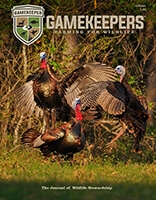Introduction: The Masked Bandit
The highly intelligent, clever, and adaptable raccoon has a mixed reputation. While undeniably adorable with its furry masked face, its talents often lead to mischief. Members of the Christopher Columbus expedition were the first Europeans to document the raccoon in writing. Taxonomists initially related the raccoon to dogs, cats, badgers, and bears. The name ‘raccoon’ comes from the Powhatan word aroughcun, meaning ‘animal that scratches with its hands.’ In 1780, the raccoon was assigned its own genus, Procyon lotor, which refers to its habit of rubbing or ‘washing’ food, especially near water. These are just a few of the fascinating raccoon facts that highlight its unique behavior and history.
Raccoon Habitats and Behavior
Once primarily a woodland animal, the raccoon has proven to be highly adaptable, thriving in various environments, from the forests of Canada to the urban streets of Panama. They inhabit wetlands, woods, mountains, parks, and suburban areas, as long as there’s food, cover, and water available.

Tes Jolly
Dens and Sleeping Habits
Raccoons usually den in trees or on rock ledges but will also make use of barns, chimneys, attics, or other available structures. Being nocturnal, they spend the day resting in their den. Although they don’t hibernate, during cold winters, they may stay in their den for extended periods, living off fat reserves.
Raccoon Reproduction
Mating season for raccoons spans from January to June, depending on the region. Typically, females give birth to one litter per year, usually consisting of three to seven kits. These young raccoons stay with their mother through the winter before dispersing in the spring.
Physical Traits and Adaptations
Easily identified by the iconic black “mask” around its eyes and ringed tail, the raccoon has several physical adaptations for survival:
- Enhanced Night Vision: The dark fur around the eyes reduces glare, improving their ability to see in the dark.
- Keen Senses: Raccoons have exceptional hearing, smell, and sight, along with a highly developed sense of touch that surpasses most non-primate mammals.
- Grasping Paws: With their dexterous, finger-like paws, raccoons can open trash cans, unlock doors, and cause mischief in urban areas—earning them the nickname “trash pandas.”
Diet and Feeding Habits
Raccoons are omnivores, eating a wide variety of foods based on their environment and the season. Their diet includes:
- Insects, nuts, fruit, and berries
- Mice, squirrels, bird eggs, and crawfish
- Fish, snakes, frogs, and songbirds
- Vegetables and agricultural crops
In South Florida, raccoons have even been known to raid American crocodile nests. As nest predators, raccoons can have a significant impact on ground-nesting birds like wild turkeys and quail.
Raccoon Predators and Threats
While raccoons face predation from bobcats, wolves, coyotes, cougars, great horned owls, lynxes, and even bears, their main threat comes from vehicles. They can also contract and carry various diseases, including rabies, canine distemper, leptospirosis, and parasitic infections.
Historical and Cultural Significance
Raccoons have long been important in human history:
- Native American Relations: Early tribes hunted raccoons for food and fur, using their tails and bones for ornaments. The raccoon was often seen as a trickster spirit, admired for its cleverness and ability to escape danger.
- The Fur Industry: Settlers trapped raccoons for trade, food, clothing, and coonskin caps. In the 1920s, raccoon fur coats became a popular status symbol.
- Modern Impact: Raccoon populations have fluctuated with fur demand, but since the 1990s, fur prices have declined, leading to an increase in their population.
Raccoon Management
Today, research shows that in areas where wild turkey populations are declining, raccoons and other nest predators significantly impact nesting success. Timely trapping programs, regulated by local authorities, can help reduce these effects.
Dr. Michael Chamberlain, Ph.D., from the University of Georgia, shares that raccoons use their keen sense of smell to navigate fragmented landscapes, including roads and other linear features, making habitat management even more crucial in mitigating their impact on nesting birds.
Conservation Status
The national population of raccoons is stable, and the International Union for Conservation of Nature (IUCN) lists them as a Species of Least Concern.
Did You Know?
- Sensitive Paws: A raccoon’s front paws are protected by a thin, horny pad that becomes highly sensitive when wet. Their five fingers have no webbing, and stiff hairs above their claws serve as organs of touch.
- Weight Range: Raccoons can weigh anywhere from 4 lbs. to 56 lbs., with the smallest found in southern Florida.
- Lifespan: Wild raccoons live, on average, 3 years or less, but in captivity, they can reach 20 years old.
- Swimming Ability: Raccoons are excellent swimmers, capable of catching amphibians and fish or swimming long distances to escape danger.
- Vocalizations: They communicate with various sounds, including churring, chittering, and purring.
- Speed: Raccoons can run up to 15 mph. Their sharp claws and rotating hind feet (which can turn 180 degrees) allow them to climb headfirst down trees.
- Teeth and Biting Force: A raccoon has 40 teeth, with a biting force of 32 pounds per square inch, slightly less than a dog’s.
- Mental Agility: Raccoons can learn to open complex locks and remember how to solve tasks for up to three years.






